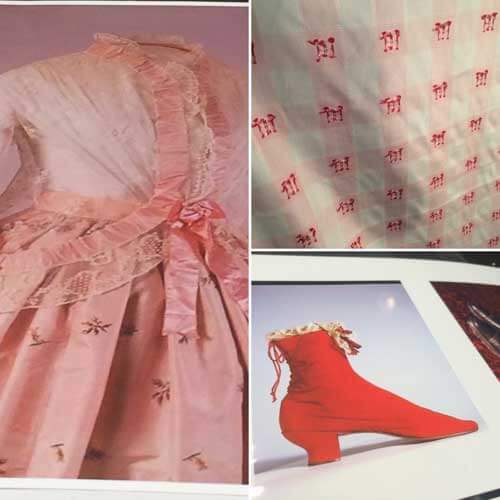Backstage with Matthew-Dressing for Gold
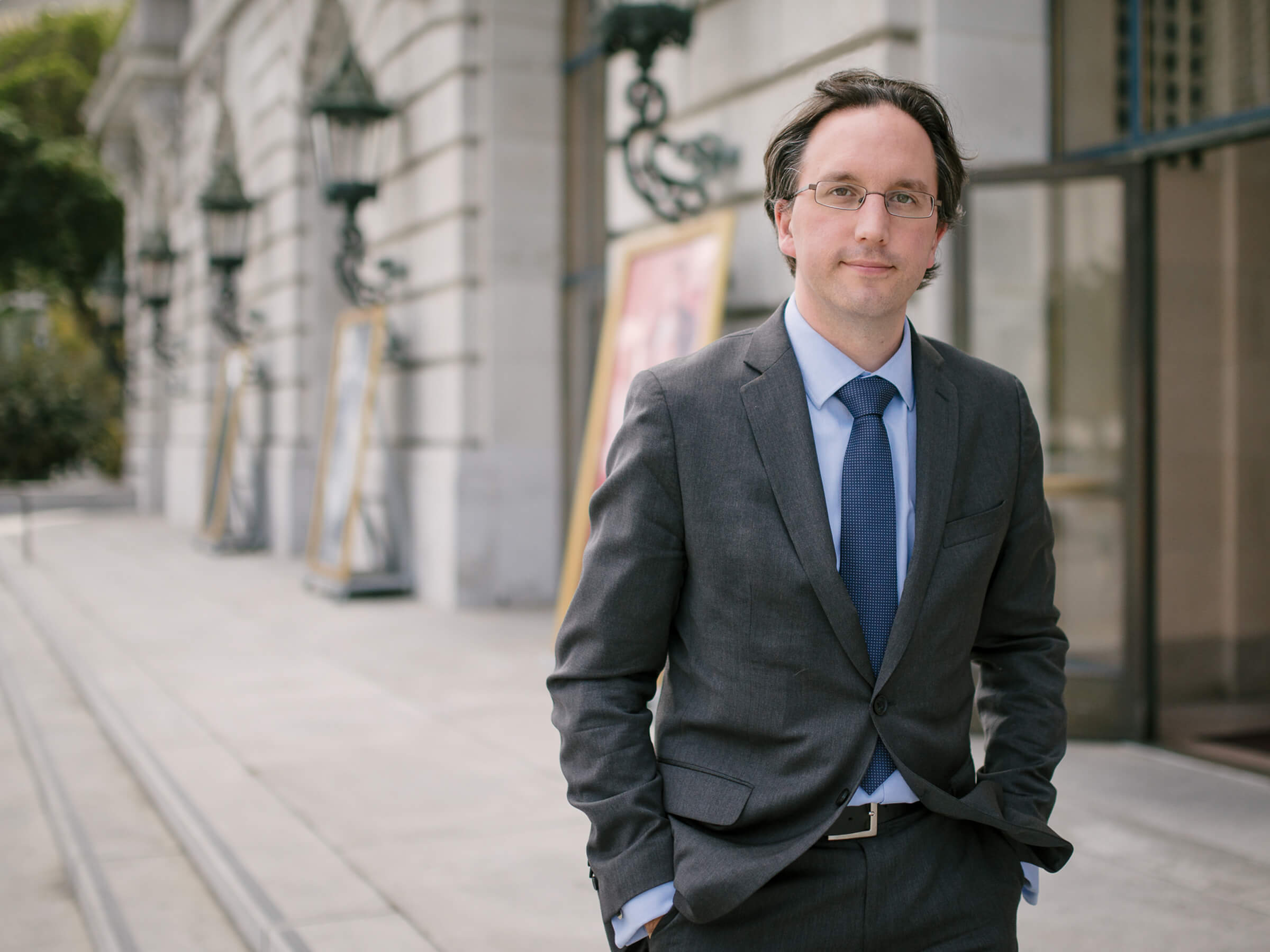
Preparations for this highly-anticipated world premiere are building as we approach a technical and staging workshop in August and then the main rehearsal period in October. Last week, designer Rita Ryack joined us in the costume shop, meeting to finalize designs and choose fabrics for the incredible period costumes that will be featured on stage.
Rita has designed costumes for theater, opera, Broadway, film and television and her film credits include Casino, Cape Fear, Wag the Dog and Apollo 13. She also designed Michael Jackson’s video Bad. She has a passion for historical detail and spends hours and hours poring through research materials online, in catalogues, in books and in any source she can find to understand the specificity, nuance and flair of a particular time period. The Los Angeles County Museum of Art has been a particularly rich source for Gold Rush costume research. Interestingly, the 1850s is the first time when photography becomes a source of costume research, opening up much more specific insights into how people moved and engaged with clothing.
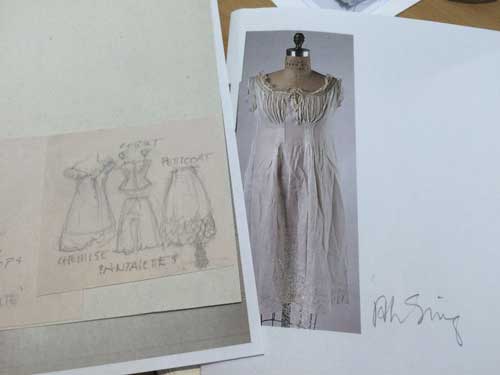
Rita is working symbiotically with SFO’s costume shop to bring the clothes of Girls to life, partnering with our Costume Shop Manager, Jai Alltizer, who will oversee the production process and our team of drapers, cutters and costume technicians. Jai has been with the Opera for sixteen years, beginning as a stock assistant before moving into supervisory and management roles. He has been involved with other historical pieces here like Appomattox and Dr. Atomic, and has an encyclopedic knowledge of costuming and the creative process.
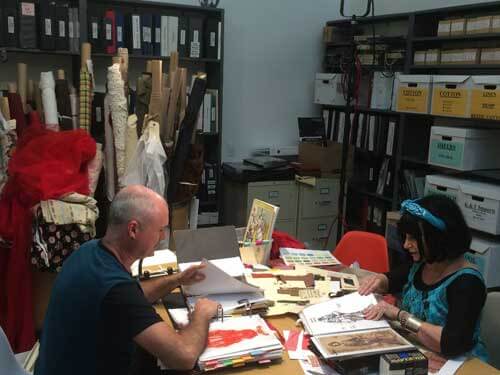
The process is a very iterative one between Rita and Jai. After extensive historical research Rita sketches out miniature designs (her early background in animation is invaluable here!). Those miniatures give the shape and conception of each costume, after which she and Jai source fabrics, liaising with director Peter Sellars. The fabrics in Girls are extraordinary, with our protagonist Dame Shirley having some particularly beautiful pieces from an Asian-inspired print popular in the 19th century (used for the Coronation Dinner) to an authentic beetle-wing encrusted fabric that forms the dress for her dramatic Lady Macbeth soliloquy, to a muted but intense brown fabric that will be her dress for the final reflective epilogue.
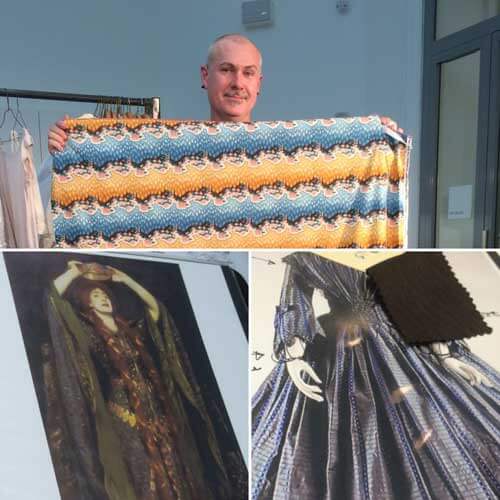
For Rita, fabric and design are inherently interwoven into the dramaturgy of the piece and each of her costume choices is underpinned by thoughtful connections to the character: a jagged, pointed dress design for Dame Shirley’s epilogue will reflect the aggression of the despoiled landscape; the elegance of the freed slave Ned will reflect his having owned a used clothing store and his interest in fashion.
The male costumes are particularly fascinating given the photographic evidence available. Denim as purveyed through companies like Levi’s wasn’t invented until 1873 so for this opera, set in 1851–52, you’ll see cotton pants and even suit bottoms, which would have been the norm. Clarence, a miner in the opera, will have a buckskin coat replete with elaborate fringes, hints of Native American design which would have been incorporated at the time, and a belt specific to the different wars in which he would have fought. Of particular elegance will be the landowners like the Chilean Ramón, who will have the most exquisite of white suits, tall boots and an elegant cravat. Other landowners will have pieces of finely detailed leatherwork with beautifully stitched chaps, and ornately patterned shirts. Cleanliness and elegance were not easy to come by in the mines but many women made a successful business out of laundering, and the mines were not without chic style!
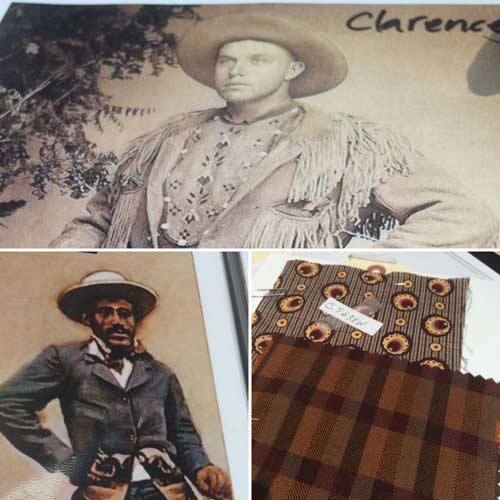
Costume research for Clarence and Ned, along with fabric swatches for Ned’s costumes.
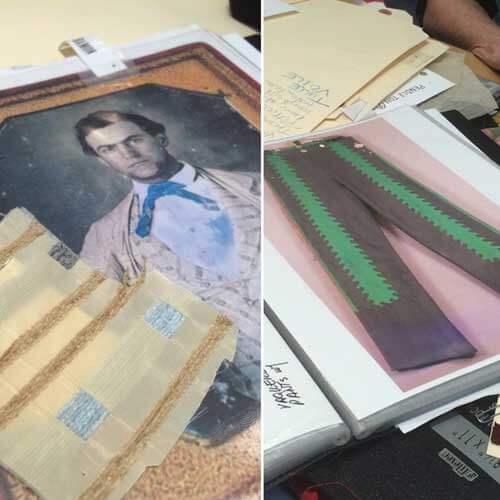
Once designs and fabrics have been finalized, the cutters will produce muslin mock-ups of the clothes to allow Rita and Jai a chance to refine and adjust before moving to the real fabrics. These muslin mock-ups often become rehearsal costumes to allow singers the chance to experience the shape and feel of a piece while in rehearsals. Once approved, the designs are created in real fabrics and then fit onto the singers and dancers. A few members of the chorus had their clothes fit at the end of last week to allow Rita a chance to make adjustments before she leaves; the rest of the chorus will be fit in July, and the principals in August.
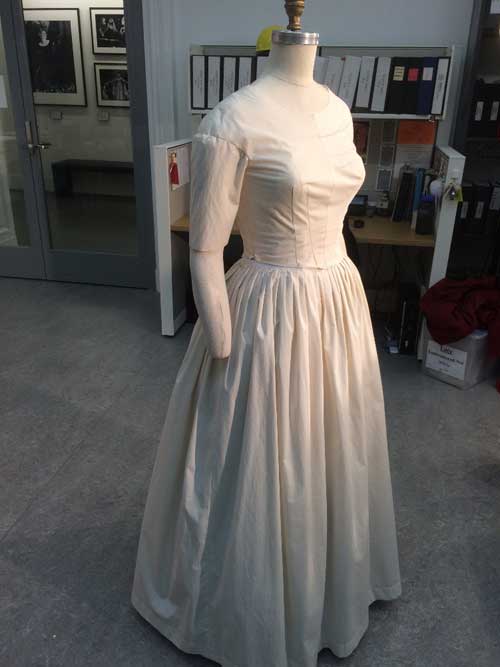
Rita and Jai bring such extraordinary talents to the design and execution of their work, and the clothes they and the costume team are creating will give us a deeply authentic glimpse into our own history here in California, a history of grit and determination but also stylish fashion and extravagance. It’s going to be an extraordinary production!
